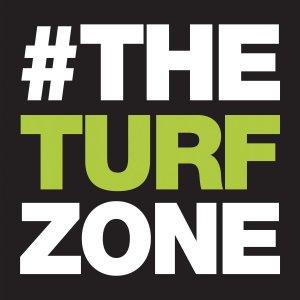The Turf Zone Podcast

Maryland Turfgrass Council – Measuring Putting Green Firmness
MTC Turf News – Daniel O’Brien; Doug Karcher, Ph.D. and Mike Richardson, Ph.D.
This article was originally published in GCM, June 2021.
Putting green firmness can be a difficult metric to define and interpret. Turf scientists discuss different measurement methods and how to translate the data into management decisions.
We’ve been extremely fortunate to work with a lot of neat “gadgets and gizmos” during our research, taking all types of measurements, usually on putting greens. We’ve collected a lot of interesting data and learned quite a bit along the way, but we must confess that when it comes to firmness, we still have a lot of questions. We’ll work our way back to those, but let’s start with the basics of what we do know.
Putting green firmness: Important and elusive
In and of itself, firmness isn’t a difficult concept to understand or appreciate. After all, it’s one half of the celebrated mantra of “firm and fast,” it has direct implications on playability, and the overwhelming consensus is that it’s a desirable attribute of a quality golf course. We care about firmness because it relates to ball-bounce and shot-hold capacity and the durability of the putting surface. When managed properly, firmness can be a defining hallmark of the skill and strategy required to play the game at the highest level.
But where the waters become a little murky is when you try to articulate what ideal firmness looks like. We often talk about firmness not so much by what it is, but by its absence — “These greens are too soft/too hard.” Ultimately, firmness is about rewarding (and demanding) quality golf shots while preserving the integrity of the putting surface.
The key point in all of this is, with firmness, sometimes it’s easier to attach a number than a definition. With technology today, we can measure a lot of things, but firmness measurements on their own are just a number. If you’re going to spend the time collecting those numbers, you need to have a picture of what that number looks like at the moment of impact when the golf ball meets the putting surface.
Tools for measuring putting green firmness
When it comes to producing a number you can work with, there are several options for how to do it. We’re going to separate those options into two basic camps: accelerometer measurements and depth measurements (Figures 1 and 2). There is a third “indirect” option for assessing firmness through volumetric water content (VWC), which we’ll touch on as well.
Starting with accelerometer measurements, the Clegg Impact Soil Tester is the standard in turfgrass research. Originally developed by Baden Clegg, Ph.D., for testing road subgrades (1), this device has proven particularly useful for evaluating the hardness (or softness) of turfgrass surfaces. The accelerometer is contained within a weighted cylinder (aka impact hammer), which is raised to a prescribed height and dropped through a guide tube, and upon impact with the ground, everything comes to an abrupt stop. The deceleration caused by that collision with the ground is recorded through electrical impulses and reported in units of gravities (G) (7). While these units are not something most of us encounter on a daily basis, the take-home message is, the larger the number, the firmer the surface.
It is important to note that there are different models and protocols for the Clegg. Different models have different hammer weights, and protocol differences typically involve variations in the height from which the hammer is dropped or the number of drops in a single location before the value is recorded. If you’re trying to compare your measurements to a reference dataset or a range of values, be sure you know the model and protocol used. The American Society for Testing Materials (ASTM) is a good source for more details on specific testing protocols. For turfgrass situations, the 2.25-kilogram model is very common,






 Visit Podcast Website
Visit Podcast Website RSS Podcast Feed
RSS Podcast Feed Subscribe
Subscribe
 Add to MyCast
Add to MyCast